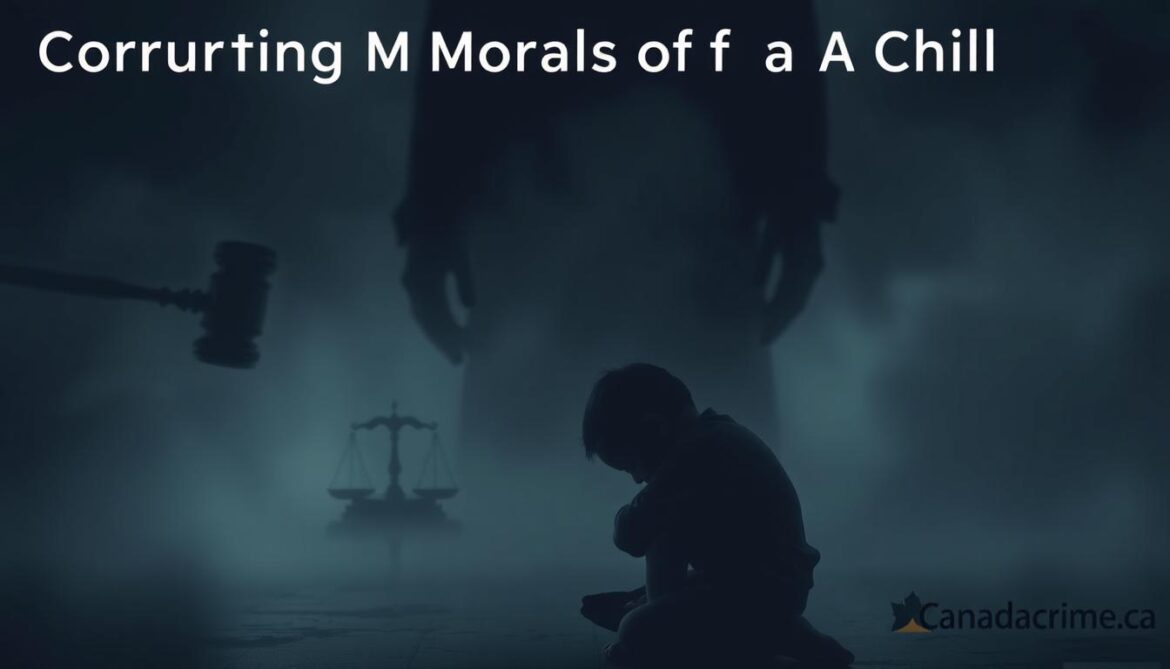In 2022, Canadian authorities investigated over 27,000 online child exploitation cases. This marked a 31% increase from the previous year. These numbers show why understanding child protection laws is vital for Canadians.
The Criminal Code of Canada has provisions to protect minors from harmful influences. Section 163.1 defines offenses related to corrupting morals of a child. It also outlines severe penalties for those convicted.
These laws may interest you as a parent, legal professional, or someone facing allegations. This guide will help you understand child protection laws in Canada.
Knowing your rights and legal definitions is crucial. It’s the first step to protecting children or defending against false accusations.
We’ll explore legal terms, court procedures, and potential consequences. Our aim is to provide clear, easy-to-understand information.
The Legal Framework of Child Protection in Canada
Canada has a robust legal system to protect children from harm. This system combines criminal laws with social welfare protections. It creates a safety net for the country’s most vulnerable citizens.
Understanding these legal frameworks is crucial for dealing with child protection issues. The system works at both federal and provincial levels to ensure comprehensive coverage.
Overview of Child Protection Laws
The Criminal Code of Canada is the main federal law addressing serious offenses against children. Section 163.1 defines child pornography and sets harsh penalties for related crimes.
The Criminal Code also includes laws against voyeurism, obscenity, and kidnapping. Kidnapping is one of the most serious crimes against children’s freedom and safety.
Child endangerment laws punish actions that put children at risk. Adults who expose kids to danger or bad influences may face charges.
Contributing to a minor’s delinquency is another major offense. This happens when an adult helps a child commit illegal acts. It also includes encouraging behavior that harms a child’s moral development.
Federal vs. Provincial Jurisdiction
Canada’s child protection system balances federal and provincial powers. This dual approach combines criminal sanctions with social services. It creates a thorough system to safeguard children.
The federal government sets national standards for child-related crimes. These include sexual exploitation, child pornography, and child luring. The RCMP and federal prosecutors handle these cases.
Provincial governments manage child welfare services and protective interventions. Each province has its own child protection laws. These laws allow social services to investigate abuse reports and protect children.
| Aspect | Federal Jurisdiction | Provincial Jurisdiction |
|---|---|---|
| Legal Foundation | Criminal Code of Canada | Provincial Child Welfare Acts |
| Primary Focus | Criminal prosecution of offenders | Protection and welfare of children |
| Key Authorities | RCMP, Federal Crown Prosecutors | Child Protection Services, Family Courts |
| Typical Interventions | Arrest, criminal charges, incarceration | Family support, supervision orders, removal from home |
This split jurisdiction can make cases of child moral corruption complex. A situation might trigger both a federal criminal investigation and provincial welfare intervention.
Coordination between these systems is vital. It ensures both the prosecution of offenders and the protection of affected children.
Corrupting Morals of a Child: Legal Definition
Section 163.1 of the Canadian Criminal Code protects minors from sexual exploitation and harmful content. This law sets up safeguards for children’s development and well-being. It defines what counts as corrupting a child’s morals.
Section 163.1 of the Criminal Code
Child pornography is a key part of corrupting a child’s morals. The law bans any images of people under 18 in sexual acts. This includes photos, films, videos, and digital content.
Materials showing sexual organs or anal regions of minors are also illegal. Written content promoting sexual activity with kids is banned too. These rules show Canada’s effort to keep children safe.
Historical Development of the Law
Child protection laws have changed a lot over time. Early rules were part of general obscenity laws. Section 163.1, introduced in the 1990s, focused on protecting minors.
This change showed society cared more about child welfare. The law shifted from general morality to specific protections against exploitation.
Recent Amendments and Updates
Canada has made its child protection laws stronger in recent years. New rules address online crimes and close gaps in old laws. These updates show the government’s commitment to keeping kids safe.
Penalties for offenders are now tougher. The list of banned materials has grown. These changes help protect children from new threats online and on social media.
Elements Required to Prove Corrupting Morals of a Child
Canadian law requires several key components to prove corrupting morals of a child. The Crown must show both physical actions and mental state beyond reasonable doubt. Understanding these elements is vital if you face such allegations.
Actus Reus (Prohibited Actions)
The actus reus refers to the physical elements of the offense. Section 163.1 of the Criminal Code outlines these actions:
- Making child pornography
- Distributing or transmitting child pornography
- Possessing child pornography
- Accessing child pornography
Each category represents a separate offense with specific legal elements. “Making” includes creating or producing material showing a minor in explicit sexual activity.

Mens Rea (Mental Intent)
The mens rea focuses on your mental state during the alleged offense. Prosecutors must prove you knowingly committed the act and were aware of its nature.
For possession charges, the Crown must show you had knowledge and control of the material. Accidental possession may be a defense, but courts examine circumstances carefully.
Age Considerations and Consent Issues
Canadian law sets 18 as the age threshold for child pornography offenses. This is higher than the general age of consent for sexual activity (16 years).
A person can legally consent to sex at 16 but not to being in pornography until 18. Mistaken belief about age isn’t a defense unless all reasonable steps were taken.
Courts face challenges with teen sexting and self-generated content. The law aims to protect children while addressing peer-to-peer sharing among minors.
Knowing these elements helps you understand the legal framework and potential defense strategies for such serious allegations.
Related Criminal Offenses in Canadian Law
Canadian law protects minors through a network of criminal offenses. These laws complement corrupting morals provisions. They form a framework to address various forms of exploitation.
Understanding these offenses is vital for those facing potential charges. It’s also crucial for anyone seeking to protect a child’s wellbeing.
Child Pornography Offenses
The Criminal Code defines four child pornography offenses in Section 163.1. These include making, distributing, possessing, and accessing child pornography. Each offense has different elements and penalties.
Making child pornography is the most serious offense. It involves direct sexual abuse of minors. Distribution charges apply when someone shares such material.
Possession and accessing charges can apply even without downloading. Viewing the material alone can lead to these charges.

Sexual Exploitation and Grooming
Canadian law criminalizes adults who exploit positions of trust with minors. This includes using authority or dependency to facilitate sexual contact. Grooming minors involves building trust to manipulate them for sexual purposes.
These charges often accompany corrupting morals allegations. This is common in cases involving direct contact with children.
Internet Luring and Online Offenses
Section 172.1 addresses internet luring. It criminalizes online communication with minors for sexual purposes. This offense exists even without physical contact.
Related laws include voyeurism (Section 162) and publication of intimate images without consent (Section 162.1). Section 163 covers obscene materials.
These laws have adapted to address new forms of child exploitation. Prosecutors may pursue multiple charges when misconduct spans different exploitation types.
Penalties and Sentencing for Corrupting Morals of a Child
Canadian law imposes strict penalties for corrupting children’s morals. This reflects society’s dedication to protecting vulnerable youth. Understanding potential consequences is vital if you face child pornography charges.
The Criminal Code of Canada outlines sentencing guidelines for these offenses. These penalties highlight how seriously Canadian society views crimes exploiting children.
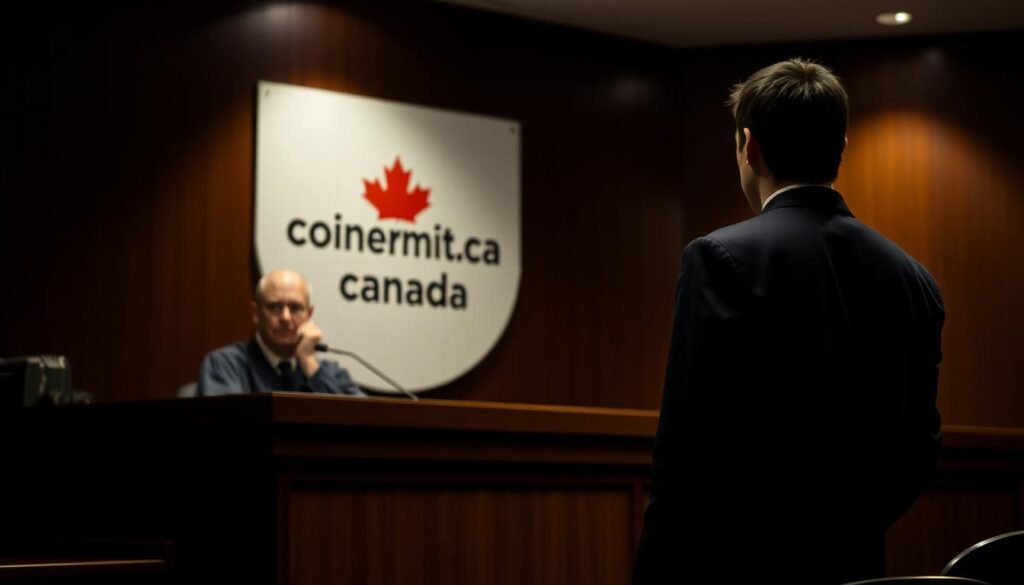
Mandatory Minimum Sentences
Canada has set mandatory minimums for corrupting children’s morals, especially child pornography offenses. These minimums show Parliament’s view on the severity of these crimes.
Possessing child pornography carries a six-month minimum for summary convictions. Indictable offenses have higher minimums. Production and distribution have even stricter sentences.
Every person who makes, prints, publishes or possesses for the purpose of publication any child pornography is guilty of an indictable offence and liable to imprisonment for a term of not more than 14 years and to a minimum punishment of imprisonment for a term of one year.
Making or distributing such material results in at least one year in prison. These minimums apply regardless of criminal history or personal circumstances.
Maximum Penalties and Aggravating Factors
Maximum penalties for corrupting morals of a child can reach 14 years imprisonment. Several factors can increase your sentence:
- The age and vulnerability of the victims involved
- Whether you held a position of trust or authority over the child
- The commercial nature of the activity
- Whether the offense was committed with intent to profit
- The extent of psychological or physical harm caused to victims
Courts consider the scope and nature of the material involved. Large collections or extreme content typically result in harsher sentences.
Sex Offender Registry Requirements
Conviction triggers mandatory registration under the Sex Offender Information Registration Act (SOIRA). This creates long-lasting consequences beyond prison time. The registry helps law enforcement monitor convicted sexual offenders.
SOIRA Registration Process
After conviction, you must report to a registration center. You’ll provide personal information, including:
- Your name and any aliases
- Current address and telephone numbers
- Physical description and photographs
- Details about your employment and educational activities
- Vehicle information
You must update this information yearly and report changes within seven days. Failing to comply is a separate offense with additional penalties.
Duration of Registration
Registration duration depends on your offense and case circumstances. It typically falls into three categories:
| Duration | Applicable Offenses | Removal Possibility |
|---|---|---|
| 10 years | Summary conviction offenses or indictable offenses with maximum sentences under 10 years | Application possible after 10 years |
| 20 years | Most indictable offenses with maximum sentences of 10-14 years | Application possible after 20 years |
| Lifetime | Multiple convictions or most serious offenses | Extremely limited removal options |
Child pornography offenses usually result in 20-year or lifetime registration. Removal options are limited and require proving registration impact outweighs public interest.
Registration can affect employment, housing, and relationships. Many offenders face ongoing stigma and restrictions that alter their life prospects.
These severe penalties highlight the importance of legal representation. Protecting your rights is crucial when facing charges of corrupting a child’s morals.
Your Legal Rights When Under Investigation
If you’re under investigation for corrupting morals of a child in Canada, you have important legal rights. These rights protect you during the investigation process. Understanding them can help your case and shield you from potential overreach.

Right to Remain Silent
The Canadian Charter of Rights and Freedoms protects your right to remain silent. You can’t be forced to provide evidence against yourself during questioning. This applies to all investigations, including those for corrupting morals of a child.
It’s crucial to use this right early on. Many cases rely on statements made during initial questioning. Remember, anything you say can be used against you in court.
You can clearly state: “I wish to remain silent and speak with my lawyer.” Stay firm in this decision, even if police continue questioning you.
Protection Against Unreasonable Search and Seizure
The Charter also protects you from unreasonable searches of your property. For cases involving minors, investigators usually need a warrant to search your belongings.
Warrants must be based on reasonable grounds that evidence will be found. Without proper authorization, any evidence obtained may be inadmissible in court.
You can ask to see a warrant before allowing a search. If no warrant is presented, you can legally refuse access in most cases.
Privacy Rights in Digital Evidence
Digital evidence is key in many corrupting morals of a child investigations. Your devices and online accounts have special privacy protection under Canadian law.
Courts have ruled that passwords and encryption keys generally can’t be forced from you. Law enforcement needs specific authorization to access your digital devices.
Separate warrants are often required for cloud storage, social media, and email accounts. Digital privacy laws continue to evolve, with courts recognizing the importance of electronic data protection.
Your Rights During Arrest and Detention
Knowing your legal rights during an arrest can greatly affect your case outcome. Canadian law provides protections to ensure fair treatment throughout the criminal justice process. These rights apply even when facing serious allegations of child exploitation.
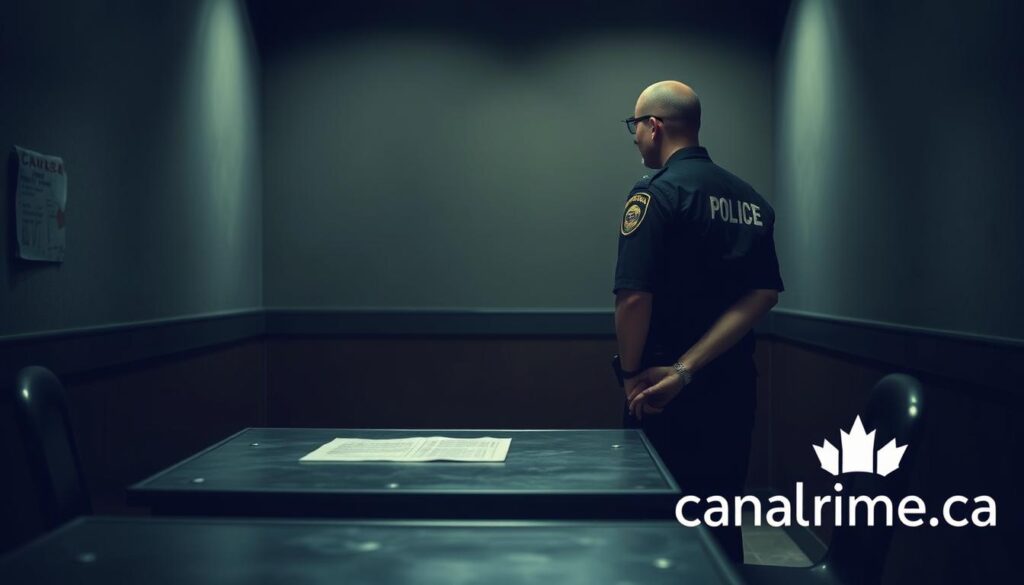
Right to Legal Counsel
Section 10(b) of the Canadian Charter of Rights and Freedoms gives you the immediate right to legal counsel. Police must inform you of this right upon arrest. They must allow you to contact a lawyer before questioning begins.
When facing charges of corrupting a child’s morals, exercising this right is crucial. Your lawyer can guide you on what to share with authorities. They ensure police follow proper procedures and start building your defense strategy.
- Advise you on what information to share with authorities
- Ensure police follow proper procedures
- Begin building your defense strategy immediately
Bail Considerations
Securing bail for child sexualization charges can be challenging. Courts consider several factors when determining release. The Crown often seeks detention based on the seriousness of these charges.
If granted bail, expect strict conditions. These may include restrictions on internet access, contact with minors, and computer use.
“The bail hearing represents a critical early opportunity to assert your rights and begin mounting an effective defense strategy.”
Protection Against Self-Incrimination
You have the right to remain silent during police questioning. Anything you say can become evidence against you. This protection is particularly valuable in child morality cases.
Investigators often use specialized interrogation techniques in these cases. They may claim to have more evidence than they do. They might use sympathetic approaches or extended questioning to encourage disclosure.
Your best protection is to state your intention to speak with a lawyer. Remain silent until you’ve received proper legal advice.
- Claiming to have more evidence than they actually possess
- Using sympathetic approaches to encourage disclosure
- Extended questioning designed to wear down resistance
Legal Defense Strategies in Child Morality Cases
Child morality cases require a deep understanding of Canadian law defense strategies. Your approach can greatly affect your case’s outcome. A good defense examines evidence and challenges how it was obtained.
Challenging Evidence Collection Methods
Effective defense often involves scrutinizing evidence collection methods. Law enforcement must follow strict rules when investigating child pornography or morality offenses.
You can question if device searches were done with proper warrants. Your lawyer may try to suppress evidence if investigators overstepped their bounds.
The Canadian Charter of Rights and Freedoms allows exclusion of evidence from Charter violations. This can include improperly seized digital files or communications related to your case.
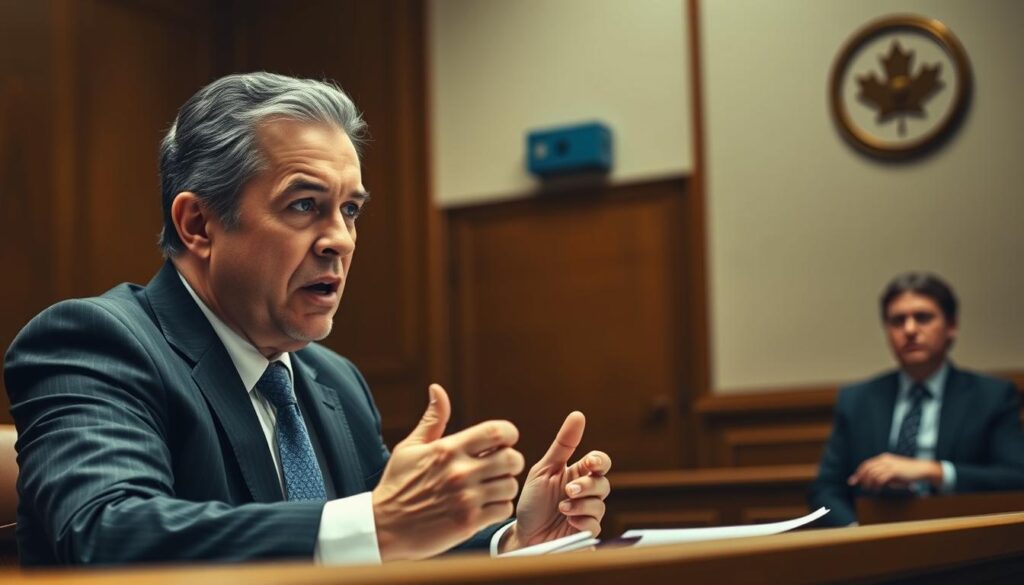
Constitutional Challenges
Your defense team might challenge certain laws as violating your Charter rights. These could argue that some Criminal Code sections infringe on freedom of expression.
Courts generally uphold child protection laws against such challenges. The Supreme Court recognizes the government’s interest in protecting children from exploitation.
Your lawyer might challenge mandatory minimum sentences in these cases. Some courts have struck down these minimums for violating Charter protections.
Establishing Reasonable Doubt
Criminal defense relies on the presumption of innocence. The Crown must prove guilt beyond reasonable doubt. Several strategies can help create doubt in child morality cases.
- Contesting knowledge or control of the materials in question
- Challenging the identification of individuals in images or videos
- Questioning the age assessment of individuals depicted
- Demonstrating lack of intent to possess or distribute prohibited content
The Criminal Code provides a statutory defense in specific situations. This applies when the alleged act has a legitimate purpose and doesn’t risk harm to minors.
“Has a legitimate purpose related to the administration of justice or to science, medicine, education or art; and does not pose an undue risk of harm to persons under the age of eighteen years.”
This defense has limited use, mainly in academic, medical, or artistic contexts. Courts interpret it narrowly, and it rarely succeeds in typical cases.
Expert Witness Testimony
Expert witnesses are crucial in challenging the Crown’s case. Computer forensic experts can analyze digital evidence and explain complex technical concepts.
These experts can clarify issues like malware downloads, file access dates, and peer-to-peer networks. They can offer alternative explanations for prohibited content on devices.
Digital Forensic Evidence
Digital evidence is key in most child morality cases. Understanding this evidence is vital for an effective defense.
| Digital Evidence Type | Defense Considerations | Potential Challenges |
|---|---|---|
| File Metadata | Creation dates, modification history, access logs | Proving lack of knowledge or intentional access |
| Browser History | Search terms, visited websites, download activity | Demonstrating accidental access or third-party use |
| Network Logs | IP addresses, connection records, shared networks | Establishing unauthorized access by others |
| Storage Analysis | File locations, deletion history, recovery methods | Questioning intentional possession or knowledge |
Forensic experts can find weaknesses in the Crown’s technical evidence. They examine how files were stored and accessed on your device.
Each case is unique and needs tailored defense strategies. Work with a lawyer experienced in child morality charges to protect your rights.
The Canadian Court Process for These Cases
Canada’s court system handles corrupting morals of a child cases through several phases. Each phase has specific procedures to balance the accused’s rights and victim protection. Understanding this process can help you navigate the legal journey.
The judicial process includes pre-trial procedures, trial stages, and special considerations for victim testimony. Knowledge of these steps is crucial for anyone facing such charges.
Pre-Trial Procedures
Before trial, several critical pre-trial procedures occur. The first step is disclosure, where the Crown provides all relevant evidence to you and your lawyer.
For indictable offenses, a preliminary hearing may determine if sufficient evidence exists for trial. This hearing assesses the strength of the Crown’s case.
Pre-trial motions address crucial issues that can impact your case. These may include:
- Charter challenges regarding your constitutional rights
- Arguments about the admissibility of certain evidence
- Procedural issues that need resolution before trial
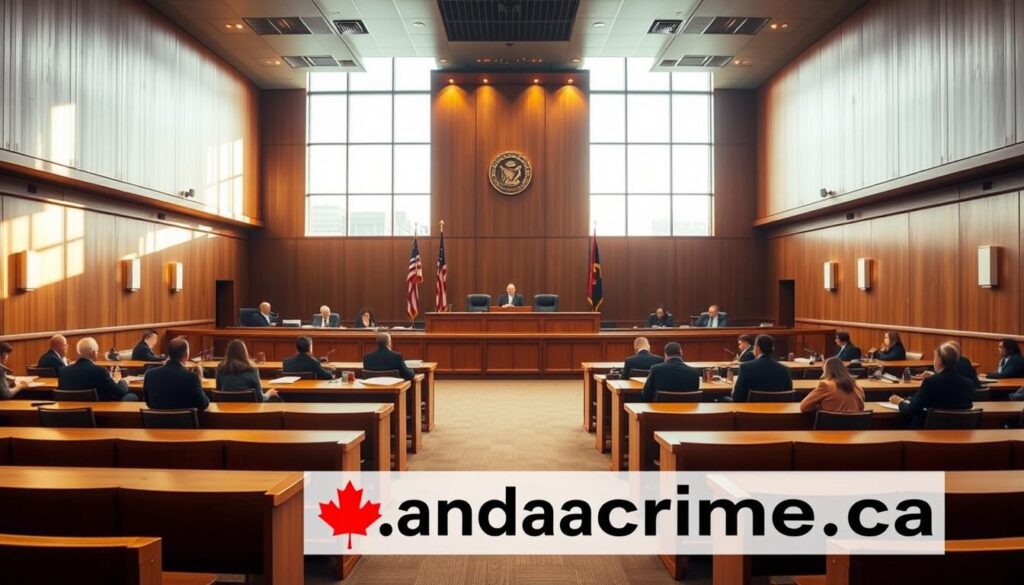
Trial Stages and Protocols
The trial follows a structured format with specific protocols for sexual abuse of minors cases. You may have the right to a jury trial for indictable offenses.
The Crown must prove guilt beyond a reasonable doubt. You aren’t required to testify but may choose to after consulting your lawyer.
Publication bans often protect the identity of complainants and sometimes the accused. This is crucial when identifying the accused might indirectly reveal the victim.
| Trial Stage | Key Activities | Your Rights | Special Considerations |
|---|---|---|---|
| Opening Phase | Jury selection, opening statements | Challenge juror selection | Publication bans typically implemented |
| Evidence Presentation | Crown presents case, witness testimony | Cross-examine witnesses | Special accommodations for young witnesses |
| Defense Phase | Defense presents evidence | Not required to testify | Character evidence limitations |
| Closing Phase | Closing arguments, jury instructions | Address reasonable doubt | Specific jury instructions for these cases |
Victim Testimony Considerations
Cases involving grooming or direct exploitation often require testimony from young or vulnerable witnesses. The Criminal Code provides special procedures for witnesses under 18 to reduce trauma.
These accommodations may include:
- Testifying behind screens to avoid seeing the accused
- Giving evidence via closed-circuit television from another room
- Using pre-recorded video statements
- Having a support person present during testimony
Courts balance your right to defense with protecting complainants from unnecessary trauma. This is crucial when witnesses are children. Your lawyer must question strategically while respecting these boundaries.
Judges often take an active role in managing these cases. They may rephrase questions or provide breaks when needed. Understanding these protocols can help prepare an effective defense strategy.
Landmark Cases and Legal Precedents in Canada
Legal cases shape child protection laws in Canada. These court decisions create a framework for interpreting laws on child endangerment and child endangerment.
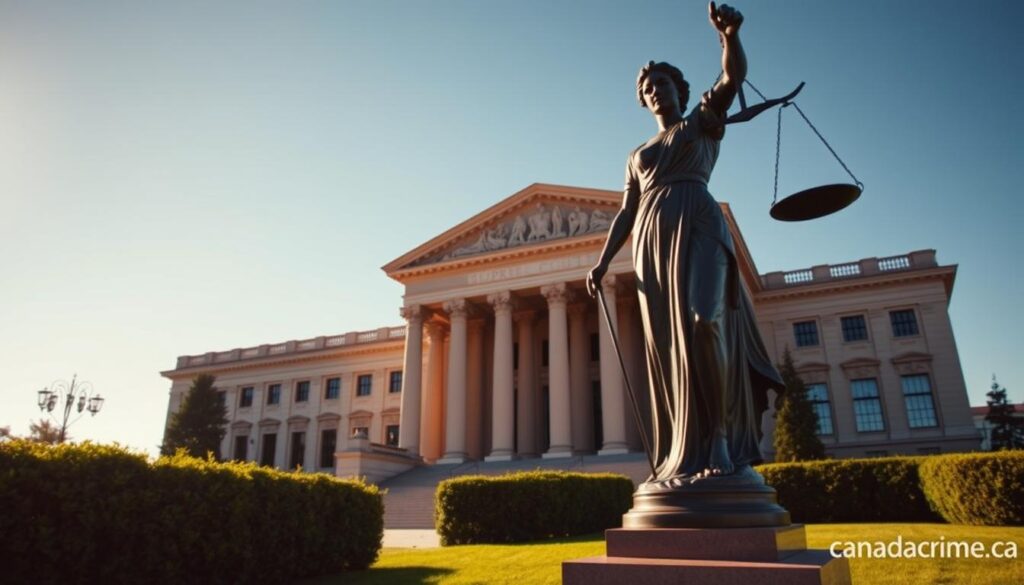
Supreme Court Rulings on Child Protection
The Supreme Court balances child protection with constitutional rights. R. v. Sharpe (2001) upheld child pornography laws while creating exceptions for private materials.
This ruling confirmed that laws against corrupting morals of a child justify limiting free expression. The Court decided that protecting children outweighs expressive interests.
R. v. Levigne (2010) addressed internet luring. R. v. Barabash (2015) clarified the “private use exception” for recordings with young people.
Evolving Interpretations of Section 163.1
Courts have refined their interpretation of Section 163.1 in the Criminal Code. The legal understanding of “possession” has changed in the digital age.
Courts now recognize that digital possession includes:
- Files saved to devices or cloud storage
- Content that has been viewed and remains accessible
- Material that the accused has demonstrated knowledge of and control over
Case law has clarified the “legitimate purpose” defense. Courts have set strict rules for its use in artistic, educational, or scientific contexts.
Impact of Digital Technology on Case Law
Digital technology has changed how courts handle evidence in child morality cases. New decisions have defined when digital traces count as possession or access.
In R. v. Morelli (2010), the Supreme Court ruled on browser cache files. They decided that knowledge and control are key for possession.
Courts have also addressed cases involving content crossing borders. R. v. Legare (2009) confirmed Canadian jurisdiction when significant parts of an offense happen in Canada.
These rulings guide how courts may interpret your case. They show how traditional legal concepts adapt to new tech realities.
Long-Term Consequences Beyond Criminal Penalties
A conviction for corrupting a child’s morals in Canada has lasting effects. These go far beyond court-imposed penalties. Understanding these long-term impacts is vital when planning your defense strategy.
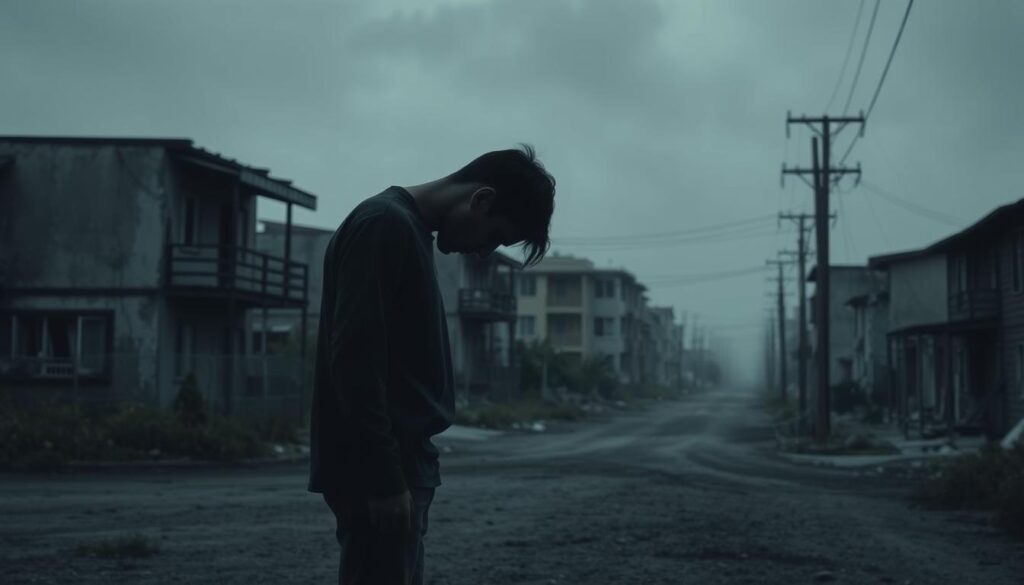
Employment and Professional Restrictions
A child exploitation conviction severely limits job opportunities. You’ll be barred from working with children, vulnerable groups, or in trusted positions.
This includes teaching, childcare, and youth work. Government jobs requiring security clearances will be off-limits. Professional licenses in healthcare, law, and finance may be revoked.
Record suspensions for these offenses are now harder to get. Serious child pornography convictions can’t be suspended, permanently affecting job prospects.
International Travel Limitations
Travel abroad becomes difficult after a contributing to the delinquency of a minor conviction. Many countries, including the U.S., deny entry to those with sex offense convictions.
If registered under SOIRA, you must notify authorities before traveling internationally. Even then, entry depends on foreign border officials, who often refuse admission.
Social Stigma and Rehabilitation Options
These convictions have far-reaching social consequences. You may face strained family relationships, housing difficulties, and community rejection.
Rehabilitation programs are available in prisons and communities. These focus on preventing reoffending and managing risk factors. Completing these may help with parole and community reintegration.
Risk assessment tools determine your recidivism potential. This affects supervision requirements and treatment recommendations. While rehabilitation is possible, stigma and restrictions often persist.
Conclusion
Canada’s legal system protects children from sexualization through strict laws. The Criminal Code imposes heavy penalties to deter offenders and safeguard kids from exploitation. These measures show Canada’s dedication to protecting its youngest citizens.
If investigated for corrupting a child’s morals, you have legal rights. These include access to a lawyer and protection against self-incrimination. The system aims to balance fair treatment with child protection.
Child abuse statistics are alarming. At least 1 in 7 kids face abuse or neglect yearly. Globally, 28.3% experience physical abuse. Abused children often develop behavioral issues and substance abuse problems later.
A conviction for child sexual abuse has lifelong consequences. It affects jobs, travel, and social status. Sex offender registry requirements create lasting obligations for years.
Laws change as technology advances. Staying informed is crucial for those working with children or concerned about their safety. It’s also important for understanding your legal position.
This overview provides useful information but can’t replace personalized legal advice. If facing allegations, consult a qualified attorney immediately. They can help navigate Canada’s complex legal system and protect your rights.

